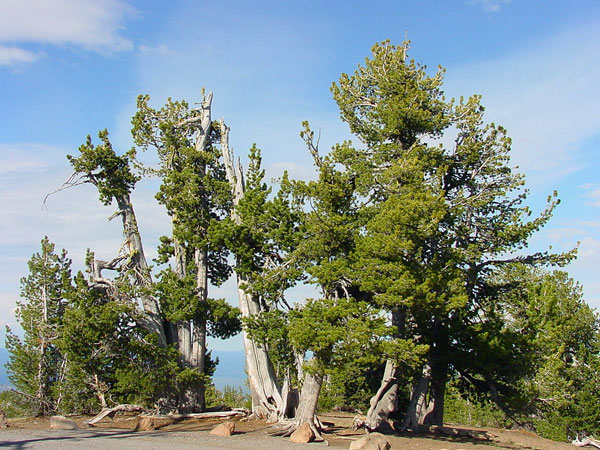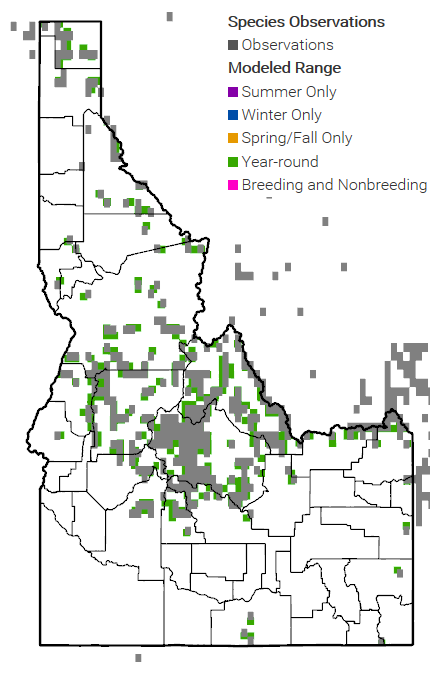ESA Status: Threatened
Whitebark pine (Pinus albicaulis) is a slow-growing and long-living tree that has been documented to live over 1,000 years old. It occurs at high elevations of montane forests throughout California, Idaho, Montana, Nevada, Oregon, Washington, and Wyoming. This keystone species helps stabilize soil, regulate runoff and snowmelt progression, and provide valuable nutrition to numerous wildlife species through its seeds. Whitebark pine has been a candidate species for listing on the Endangered Species Act (ESA) since 2011, was updated to a proposed Threatened listing on the ESA in 2020, and recived an official listing under the ESA as Threatened in December of 2022.
The main threats to whitebark pine, identified in the 2021 Species Status Assessment, are altered fire regimes, white pine blister rust, mountain pine beetle, and climate change. Historically, naturally occurring fire would remove competing species, like spruce and fir, but decades of fire suppression have allowed them to dominate the whitebark pine. White pine blister rust is a fungal disease caused by a pathogen, Cronartium ribicola, which causes a high infection and mortality rate of whitebark pines. The disease thrives in moist, humid conditions and its spread rate is only slowed in dry climates. The mountain pine beetle is native to western North America. While its population density has varied overtime, increased drought and warmer temperatures have allowed an unprecedented increase in beetle abundance and distribution causing an increasing rate of whitebark pine mortality. Numerous studies show that whitebark pines affected by blister rust are more susceptible to mountain pine beetle attacks, and, thus, accelerate the mortality of mature, reproductive whitebark pines.
Staff Contact:
More Information:
Species Profile for Whitebark Pine – U.S. Fish & Wildlife Service

Photo Credit: USFWS Endangered Species – Mountain Prairie Region

Map Credit: Idaho Department of Fish and Game
 Official Government Website
Official Government Website